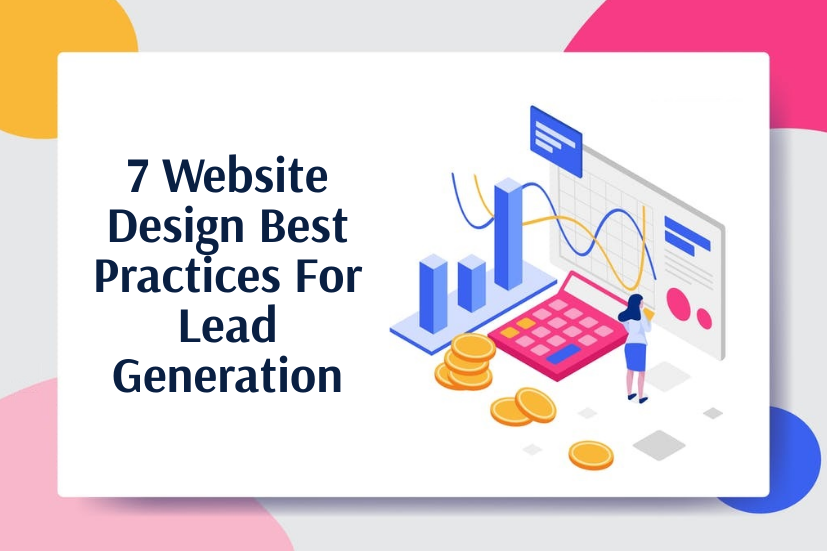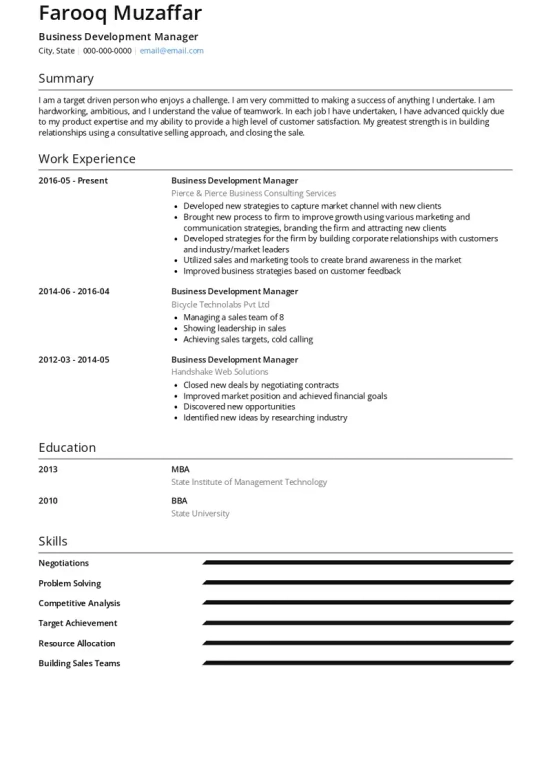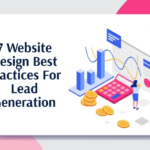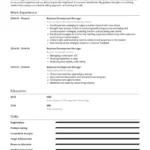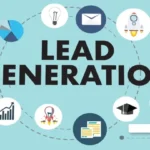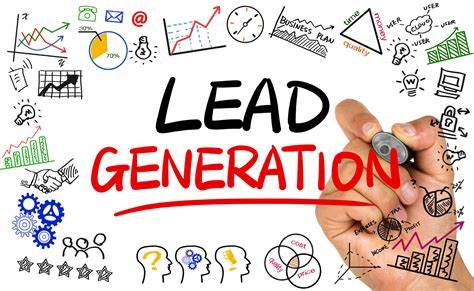
Lead generation is crucial for business growth. It helps find potential customers.
In this guide, we will explore lead generation from A to Z. Whether you’re a beginner or need a refresher, this blog will cover all the essentials. We’ll discuss strategies, tools, and tips to attract and convert leads. Understanding lead generation can boost your sales and expand your customer base.
Stay with us to learn how to create effective campaigns and track their success. Let’s dive into the world of lead generation and discover how it can benefit your business.
Introduction To Lead Generation
Lead generation is the process of attracting and converting strangers into potential customers. This involves various marketing strategies to catch the interest of prospects. The ultimate goal is to guide these leads through the sales funnel until they become paying customers.
Importance Of Leads
Leads are vital for any business. They represent potential revenue. Without leads, a business may struggle to grow. Leads help in identifying interested customers. This makes it easier to tailor marketing efforts.
Lead generation is cost-effective. It targets those already interested in your product or service. This increases the chances of conversion. Businesses can also gather valuable data from leads. This helps in improving products and services.
Basic Concepts
Understanding basic concepts is crucial for effective lead generation. These concepts include:
- Lead Magnet: An offer that attracts potential customers.
- Landing Page: A web page designed to capture leads.
- Call to Action (CTA): A prompt for the user to take some action.
- Lead Scoring: A method to rank leads based on their likelihood to convert.
A lead magnet can be a free eBook, webinar, or discount. It provides value to the user in exchange for their contact information. The landing page is where this exchange happens. A strong CTA encourages the user to submit their information.
Once leads are captured, they are ranked using lead scoring. This helps in prioritizing leads that are more likely to convert. Effective lead generation combines these concepts to create a seamless process.

Credit: blog.ryan-jenkins.com
Identifying Your Target Audience
Understanding your target audience is crucial for effective lead generation. It helps you tailor your marketing efforts. This ensures you attract the right people. This section will cover the steps to identify your target audience.
Market Research
Start with market research. Gather information about your industry. Identify trends, competitors, and potential customers. Use surveys, interviews, and online tools.
Key steps in market research:
- Analyze industry trends
- Study competitors
- Collect customer feedback
- Use online research tools
Market research helps you understand the environment. This knowledge is the foundation for identifying your target audience.
Creating Buyer Personas
Once you have market research data, create buyer personas. These are detailed profiles of your ideal customers. They include demographics, behavior patterns, and goals.
Elements of a buyer persona:
| Element | Description |
|---|---|
| Demographics | Age, gender, income, education |
| Behavior Patterns | Shopping habits, product usage |
| Goals | What they want to achieve |
| Challenges | Problems they face |
Create multiple personas if needed. Tailor your marketing efforts to each persona. This ensures your message resonates with different segments of your audience.
Understanding your target audience is an ongoing process. Continuously refine your personas based on new data. This will help you stay relevant and effective in your lead generation efforts.
Creating A Compelling Value Proposition
A compelling value proposition is the cornerstone of effective lead generation. It clearly communicates the unique benefits and value your product or service offers. This section delves into crafting your message and highlighting your unique selling points.
Crafting Your Message
Your message must be clear, concise, and focused on your target audience. Start with understanding their needs and pain points.
- Identify your audience.
- Understand their problems.
- Show how you can help.
Use simple language to communicate how your solution benefits them. Avoid jargon and complex terms.
Highlight the key benefits in a way that resonates with them. Make it easy for them to see the value.
| Aspect | Example |
|---|---|
| Problem | Time-consuming processes |
| Solution | Automated workflow |
| Benefit | Saves time |
Unique Selling Points
Identify what sets your product or service apart. Your unique selling points (USPs) must be clear and compelling.
- Highlight what makes your offer unique.
- Explain why this uniqueness matters.
- Show evidence of your unique advantages.
Use testimonials or case studies to support your claims. Real-world examples add credibility and trust.
Remember to focus on the benefits of your USPs. How do they solve your audience’s problems better than others?
Example:
Problem: Slow customer service responses.
Solution: 24/7 live chat support.
Benefit: Immediate assistance, higher satisfaction.
Building An Effective Lead Magnet
Building an effective lead magnet is essential for attracting potential customers. A well-crafted lead magnet offers value and encourages users to share their contact information. In this section, we will explore different types of lead magnets and how to design them effectively.
Types Of Lead Magnets
There are various types of lead magnets you can use to engage your audience. Here are some popular options:
- Ebooks: Provide in-depth information on a specific topic.
- Checklists: Offer a step-by-step guide to complete a task.
- Webinars: Host live or recorded sessions on relevant subjects.
- Discount Coupons: Give a percentage off on your products or services.
- Free Trials: Allow users to try your service before committing.
- Templates: Provide ready-to-use documents or designs.
Designing Lead Magnets
Designing a lead magnet involves several key elements. Follow these tips to create an effective lead magnet:
- Identify Your Audience: Understand their needs and preferences.
- Offer Value: Ensure your lead magnet solves a problem or provides useful information.
- Keep It Simple: Make it easy to understand and use.
- Use Engaging Visuals: Include images, infographics, or videos to enhance appeal.
- Include a Clear Call-to-Action (CTA): Guide users on the next steps, like downloading or signing up.
Here’s a simple table to summarize the key elements of designing lead magnets:
| Element | Description |
|---|---|
| Identify Audience | Understand who they are and what they need. |
| Offer Value | Provide something that addresses their pain points. |
| Keep It Simple | Ensure it’s easy to digest and use. |
| Use Visuals | Include engaging and relevant images or videos. |
| Clear CTA | Direct users on what to do next. |
Optimizing Your Website For Lead Capture
To capture leads effectively, your website needs optimization. This involves creating an environment that encourages visitors to share their information. With the right strategies, you can convert more visitors into leads. Below, we’ll discuss two crucial elements: landing pages and call-to-action buttons.
Landing Pages
Landing pages are critical for lead generation. They focus on a single goal: capturing visitor information. A good landing page should be simple and direct. Use clear headlines that tell visitors what they will get. Add brief, compelling content that explains the offer.
Make forms short. Only ask for essential information. This reduces friction and increases form completion rates. Use bullet points to highlight benefits. Visuals like images or videos can make the page more engaging.
Call-to-action Buttons
Call-to-action (CTA) buttons guide visitors towards your goal. They should stand out on the page. Use contrasting colors to draw attention. The text on the button needs to be clear and action-oriented. Examples include “Download Now” or “Get Started.”
Place CTA buttons in logical spots. Above the fold is ideal. Consider adding them at the end of your content too. Test different placements and designs to see what works best. Regularly update and tweak your CTAs for optimal results.
Leveraging Social Media For Lead Generation
Social media has become a powerful tool for lead generation. Businesses use various platforms to reach potential customers. This section will explore how to leverage social media effectively. We will cover different platforms and engagement strategies.
Social Media Platforms
Different social media platforms offer unique opportunities for lead generation. Here are the most popular ones:
| Platform | Key Features |
|---|---|
| Large user base, targeted ads, groups | |
| Professional network, B2B focus, lead forms | |
| Visual content, stories, influencer marketing | |
| Real-time updates, hashtags, trending topics | |
| Visual discovery, boards, pins |
Engagement Strategies
Engaging with your audience is key to generating leads. Here are some effective strategies:
- Create Valuable Content: Share informative and helpful content. This builds trust and attracts leads.
- Use Visuals: Images and videos grab attention. They increase engagement.
- Host Live Sessions: Live videos allow real-time interaction. Answer questions and provide value.
- Run Contests: Contests encourage participation. Offer incentives to attract leads.
- Leverage Influencers: Collaborate with influencers. They can promote your brand to their followers.
These strategies can help you connect with potential customers. Implement them to see better results in lead generation.
Email Marketing Techniques
Email marketing remains a powerful tool for lead generation. It allows businesses to connect with potential customers directly. Effective email marketing techniques can drive engagement and conversions. Let’s explore some key strategies.
Building An Email List
Start by creating a sign-up form on your website. Offer valuable content in exchange for email addresses. This could be a free eBook, a discount, or exclusive insights. Make the sign-up process simple and quick. Use social media to promote your sign-up form. Encourage current subscribers to share your emails with friends.
Another way to build your list is through events. Collect email addresses at trade shows, webinars, and other events. Always ask for permission before adding anyone to your list. This ensures compliance with email marketing regulations.
Crafting Email Campaigns
Your email campaigns should be well-planned. Start with a clear goal. What do you want to achieve with this campaign? Whether it’s driving traffic to your site, promoting a new product, or sharing news, a clear goal is essential.
Personalize your emails. Use the recipient’s name and tailor the content to their interests. This makes your emails feel more relevant and engaging. Keep your emails short and to the point. Include a strong call-to-action. Encourage readers to take the next step, such as visiting your website or making a purchase.
Design your emails to be mobile-friendly. Many people check their emails on their phones. A responsive design ensures your emails look good on any device. Test your emails before sending them out. Check for any errors and ensure all links work.
Analyzing And Improving Lead Generation Efforts
Analyzing and improving lead generation efforts is crucial for any business. Understanding what works and what doesn’t can lead to better results. This section explores key metrics and A/B testing to enhance your lead generation strategies.
Key Metrics
Tracking key metrics helps you understand your lead generation performance. Important metrics include conversion rate, cost per lead, and lead quality. Conversion rate shows the percentage of visitors who become leads. Cost per lead indicates how much you spend to acquire a lead. Lead quality measures how likely a lead is to convert into a customer. Monitoring these metrics can guide your improvements.
A/b Testing
A/B testing compares two versions of a webpage or campaign. This helps determine which version performs better. You can test headlines, images, call-to-action buttons, and more. Start with one change at a time. Measure the results to see what drives more leads. A/B testing helps optimize your lead generation efforts by providing data-driven insights.
Automating The Lead Generation Process
In the world of digital marketing, lead generation is key. Automating this process can save time and increase efficiency. With the right tools and workflows, businesses can generate leads without manual effort. This blog post explores how automation can transform your lead generation strategy.
Tools And Software
Automation tools and software are essential for efficient lead generation. They help capture, track, and manage leads. Here are some popular options:
- HubSpot: Offers a complete CRM with lead generation features.
- Mailchimp: Known for its email marketing and lead capture forms.
- Zoho CRM: Provides lead management and automation tools.
- Salesforce: A powerful CRM with extensive lead tracking capabilities.
- Intercom: Excellent for live chat and lead qualification.
Choosing the right tool depends on your business needs. Consider features, integration options, and budget.
Workflow Automation
Workflow automation streamlines the lead generation process. It reduces manual tasks and improves consistency. Here are the steps to automate your workflow:
- Identify Repetitive Tasks: List tasks that take up time and can be automated.
- Select Automation Tools: Choose tools that fit your needs, like CRM or email automation software.
- Set Up Triggers: Define actions that start automated workflows, like form submissions or website visits.
- Create Automated Responses: Set up emails or messages that go out automatically when triggers occur.
- Track and Optimize: Monitor the performance of your automated workflows and make improvements as needed.
Automation can handle tasks like sending welcome emails, following up with leads, and updating CRM records. This ensures leads are nurtured consistently and efficiently.
| Task | Manual Effort | Automated Solution |
|---|---|---|
| Sending Welcome Emails | High | Email Automation Tools |
| Lead Follow-Up | High | CRM Workflow Automation |
| Updating CRM Records | Medium | CRM Automation Features |
Automating the lead generation process can save time and improve efficiency. With the right tools and workflows, businesses can generate and manage leads more effectively.

Credit: www.linkedin.com
Case Studies And Success Stories
Understanding the impact of lead generation strategies can be challenging without real-world examples. This section explores various case studies and success stories to illustrate effective lead generation methods. These examples offer practical insights into what works and why.
Real-world Examples
Seeing theory in action can be enlightening. Here are some real-world examples of successful lead generation campaigns:
| Company | Strategy | Outcome |
|---|---|---|
| Company A | Content Marketing | Increased leads by 50% |
| Company B | Email Campaigns | Boosted conversion rates by 30% |
| Company C | Social Media Ads | Gained 10,000 new leads |
Lessons Learned
From these examples, we can learn several key lessons:
- Content marketing is powerful. High-quality content attracts and engages potential leads.
- Email campaigns can nurture leads effectively. Personalized emails convert more leads.
- Social media ads reach a broad audience. Targeted ads generate a significant number of leads.
To summarize, understanding and applying successful strategies can improve your lead generation efforts. Use these insights to refine your approach and achieve better results.
Frequently Asked Questions
What Is Lead Generation?
Lead generation is the process of attracting and converting prospects. It involves capturing interest in your product or service.
Why Is Lead Generation Important?
Lead generation is crucial for business growth. It helps increase sales, build customer relationships, and improve brand awareness.
How Does Lead Generation Work?
Lead generation works by capturing potential customers’ information. This is done through forms, landing pages, and calls-to-action.
What Are The Best Lead Generation Strategies?
Effective strategies include content marketing, social media engagement, email campaigns, and search engine optimization.
Conclusion
Generating leads doesn’t have to be hard. Use these A to Z tips. Understand your audience. Create engaging content. Utilize social media. Track your progress. Measure results. Adjust strategies as needed. Keep refining your approach. Stay consistent. Success comes with time and effort.
Implement these steps. Watch your leads grow. Your business will benefit. Lead generation is a continuous process. Keep learning. Keep improving. Keep generating leads. Happy lead hunting!
